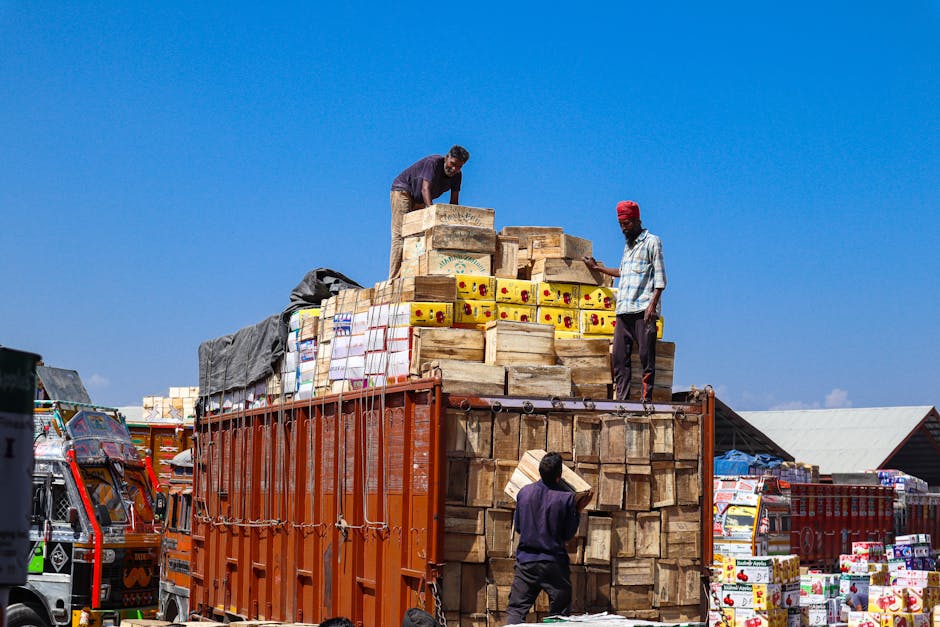When Should Flatbed Straps be Replaced to Ensure Safety in Transportation?
The roads are bustling, and the loads are heavy—flatbed straps are the unsung heroes keeping everything tied down. But even heroes wear out. Let’s explore when it’s time for a swap to keep the journeys safe.
Introduction to Flatbed Straps
Flatbed straps are integral to the logistics industry, essential for securing loads during transport. Made from materials like nylon or polyester, these straps are designed to withstand heavy use but are not immune to wear and tear. Given the critical role they play in safety and compliance, particularly in transportation hubs like Dallas, TX, understanding their lifespan and replacement criteria is paramount.
For both seasoned logistics professionals and those new to the field, grasping the basics of flatbed strap maintenance and replacement can significantly impact the efficiency and safety of transportation operations.
Signs of Wear and Tear
Identifying when flatbed straps need to be replaced is key to ensuring safe transportation. Signs of wear and tear include visible fraying, cuts, or abrasions on the strap’s surface. Additionally, any signs of UV damage, such as fading or brittleness, indicate that the strap’s integrity might be compromised.
Beyond the visible damage, straps that have been stretched out or exhibit a loss of tension during use should also be considered for immediate replacement. Keeping an eye out for these indicators can prevent potential failure during transport.
It’s important for drivers and fleet owners to conduct regular inspections and not ignore these warning signs. Small issues can quickly escalate into dangerous situations if left unaddressed.
The Impact of Weather on Flatbed Straps
In places like Dallas, TX, where temperatures can soar, understanding how weather affects flatbed straps is crucial. High temperatures can cause straps to become more pliable, potentially compromising their load-securing capabilities. Conversely, cold weather can make straps brittle and more susceptible to breaking under tension.
Moisture is another concern—it can lead to mildew or rot, particularly in organic materials like cotton straps, though less commonly used than synthetic options. Regular inspection and maintenance, coupled with an awareness of the weather’s impact, can prolong the lifespan of flatbed straps.
Legal Requirements for Strap Replacement
Legally, the responsibility for strap integrity falls on the driver and the transport company. Regulations vary by state and country but typically include guidelines on wear, damage, and load rating. For example, the Department of Transportation (DOT) sets forth specific criteria regarding the condition of flatbed straps used in transport.
Failure to comply with these regulations not only endangers the public but can also lead to hefty fines. It underlines the importance of staying informed about legal requirements related to flatbed straps in Dallas, TX, and beyond.
How Often Should Straps Be Inspected?
Routine inspection is the linchpin of strap longevity and safety. Ideally, straps should be inspected before and after each use, allowing for the identification of any immediate issues that could compromise safety. Seasonal checks are also recommended to assess any weather-related deterioration.
Keeping a detailed inspection log can help track the condition of each strap over time, making it easier to predict when replacements might be necessary. This practice is not only about compliance; it’s about commitment to safety.
Steps to Properly Replace Flatbed Straps
Replacing flatbed straps involves more than just purchasing new ones. Start by assessing the specific needs of your loads and choosing straps that meet or exceed these requirements. Remove old, worn straps completely, inspecting ratchets and fittings for damage.
After installing new straps, test them under load to ensure they maintain tension and secure the load effectively. It’s also beneficial to train all personnel on proper strap maintenance and replacement procedures to foster a culture of safety.
Choosing the Right Replacement Straps
Selecting the right straps involves understanding the types of loads carried and the environmental conditions they’ll face. Synthetic straps are best for heavy-duty use, offering resistance to weather and UV light. Width, length, and load rating are also critical factors to consider.
For operations in Dallas, TX, and similar areas, opting for straps with a higher heat resistance can be advantageous. Always purchase from reputable suppliers to ensure quality and compliance with industry standards.
Securing the Load, Ensuring the Journey
Ensuring the safety of transportation, especially in bustling hubs like Dallas, TX, hinges on the integrity of flatbed straps. Recognizing the signs of wear, understanding the impact of the elements, and adhering to legal requirements are key steps in maintaining a secure load. Remember, the road to safety begins long before the journey does; it starts with meticulous attention to the equipment that keeps loads secure.

